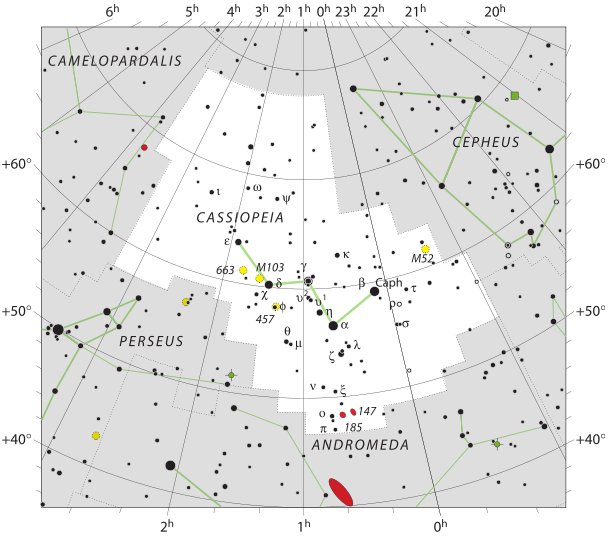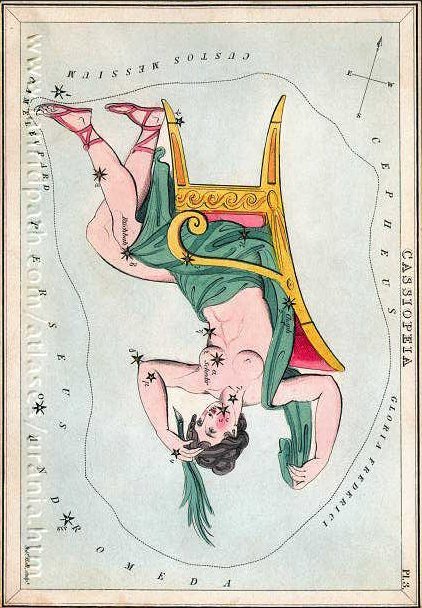1. Ksora (δ) and Segin (ε) are stars rising later than Caph (β), Schedir (α), Achird (η), and Cih (γ):
Ksora (also named Ruchbah) is at the right knee of Cassiopeia and Segin at her shin bone:
"δ is Ruchbah, sometimes Rucba and Rucbar, from Al Rukbah, the Knee ... ε, of 3.6 magnitude, nearer the foot, also has borne the title Ruchbah." (Allen) Allen does not mention the name Ksora. As to Segin there is presumably some connection with the star γ Bootis (Seginus). Wikipedia: "... It has the traditional name Seginus (also Segin, Ceginus) of uncertain origin. It was listed as Haris in Bečvář ... The name Seginus resulted from Latinization of an Arabic form of the Greek name of the constellation of Boötes (Theguius). The name Haris comes from the Arabic name of the constellation of Boötes, Al Haris Al Sama, which means 'the guard' ..." I cannot easily find any translation of Ksora, and in the dark my imagination takes control - whispers it possibly could mean 'ashore' (notice how the declination of the star is very close to 60º). |

